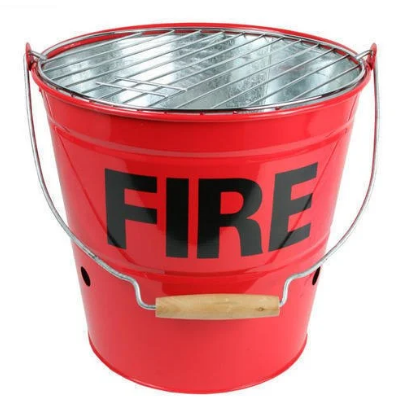Landing Valve




Components: A typical landing valve consists of several components:
Valve Body: The main part of the landing valve that controls the water flow. It usually has a handle or wheel that can be turned to open or close the valve.
Inlet Connection: This is where the landing valve is connected to the building’s water supply system. It’s often a threaded connection that can be easily linked to fire department hoses or hydrant connections.
Outlet Connection: This is where the fire hose is attached. The outlet is usually larger than a standard water outlet to accommodate the higher water flow required for firefighting.
Pressure Reducing Device (Optional): In some cases, landing valves may include a pressure-reducing device that regulates the water pressure supplied to the hose. This ensures that the hose doesn’t get damaged due to excessive pressure.
Branch Pipe




Nozzle Design: Branch pipes are designed with a variety of nozzle types that can produce different spray patterns, depending on the requirements of the firefighting operation. Common nozzle types include straight stream, wide-angle fog, and narrow-angle fog nozzles. These nozzles can be adjusted to change the spray pattern and intensity of the water flow.
Flow Control: Most modern branch pipes come with flow control mechanisms that allow firefighters to adjust the flow rate of water or firefighting foam. This feature is crucial for optimizing water usage and ensuring that the firefighting effort is effective.
Pressure Regulation: Branch pipes are also equipped with pressure-regulating mechanisms that allow firefighters to maintain a consistent and safe operating pressure. This is important for controlling the velocity of the water jet and ensuring that it reaches the intended target without causing additional hazards.
Hose Reel Drum




A hose reel drum, often referred to as a hose reel, is a cylindrical device used for storing and dispensing hoses. It is commonly employed to manage hoses that are used for various purposes, such as watering gardens, firefighting, industrial applications, and more. Hose reels are designed to keep hoses organized, prevent tangling, and prolong the life of the hose by minimizing kinks and exposure to environmental elements.
Hose reels typically consist of a cylindrical drum, around which the hose is wound. The drum can be made of various materials, such as metal, plastic, or a combination of both. The drum is mounted on an axle, which allows it to rotate, making it easier to wind and unwind the hose.
There are manual hose reels that require you to turn a crank to wind or unwind the hose, and there are also automatic or retractable hose reels that use a spring-loaded mechanism to automatically retract the hose when not in use. These automatic reels can be wall-mounted, ceiling-mounted, or even portable.
RLL Hose




- Fire Hoses: These are flexible pipes designed to carry water or fire retardant materials from a water source to the site of the fire. They come in various lengths and diameters and are typically made from materials that can withstand high pressure and exposure to fire and heat.
- Fire Hose Reels: These are devices used to store and dispense fire hoses. Fire hose reels are often mounted on walls or in cabinets for easy access. They help keep the hoses organized and ready for use.
- Nozzles: Nozzles are attached to the end of fire hoses to control the flow of water and the pattern of spray. Different types of nozzles are used for different firefighting scenarios, such as narrow streams for targeting specific areas or wide sprays for covering larger areas.
- Hose Cabinets: Cabinets are used to store fire hoses, nozzles, and other related equipment in an organized manner. They are usually located strategically throughout buildings for quick access during emergencies.
Fireman Axe




- Forcible Entry: The axe can be used to break down doors, windows, or walls during rescue operations, allowing firefighters to gain access to buildings or rooms where people might be trapped.
- Ventilation: Firefighters can use the axe to create ventilation openings in walls, roofs, or floors to release smoke, heat, and gases from a burning structure. This helps improve visibility and overall conditions inside the building.
- Search and Rescue: Firefighter axes can be used to clear debris and obstacles that might hinder search and rescue efforts, allowing firefighters to reach trapped individuals more quickly.
- Salvage and Overhaul: After a fire has been extinguished, firefighters use axes to remove damaged materials, such as ceilings and walls, in a controlled manner to prevent re-ignition of hidden hot spots.
- Wildfire Management: In wildland firefighting, axes can be used to create fire breaks by cutting down vegetation and creating a cleared area that can stop the spread of flames.
Fire Buckets




Filling: Fire buckets are usually pre-filled with water, sand, or another appropriate fire-extinguishing substance. Water is the most common choice due to its effectiveness in cooling and smothering fires.
Placement: Fire buckets are strategically placed in areas where fire hazards are present, such as near flammable materials, fuel storage, or equipment that could potentially cause a fire.
Usage: In the event of a small fire, a person can quickly grab a fire bucket and approach the fire. They would then toss the contents of the bucket onto the flames. The water in the bucket helps cool down the fire and remove heat, while substances like sand can smother the flames by cutting off the oxygen supply.
Safety: It’s important for individuals using fire buckets to prioritize safety. They should have a clear escape route and know the limitations of fire buckets. Fire buckets are most effective for small fires, and attempting to use them on larger or more intense fires could be dangerous.
Training: Proper training is essential for using fire buckets effectively. Individuals should be familiar with the types of fires that can be controlled using fire buckets, the appropriate use of the buckets, and when to escalate the response to larger firefighting equipment or professionals.
